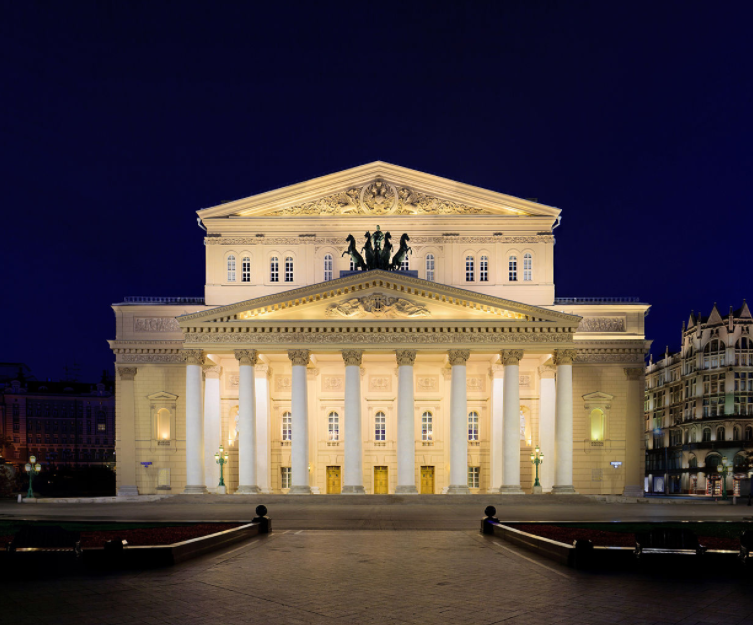Elegant ballet: A review
One WSS staffers opinion of the recent show of Romeo and Juliet performed by the Bolshoi Theatre.
Photo used with permission from Creative Commons
The theatre is in Moscow, Russia.
The Bolshoi Theatre in Moscow, Russia showcased a revamped version of Romeo and Juliet that was broadcast around the world on Sunday, Jan. 21. The world-renowned ballet theatre introduced a brand new, expressive show that further connected to the romantic roots of the play than the old performances they put on.
This new version of Romeo and Juliet, directed by Alexei Ratmansky, faced added pressure to succeed because of its contrast from the company’s customary production of the play. Directed and choreographed by the former Head Director of the company Yuri Grigorovich, the customary version focuses primarily on the oppressive circumstances in 14th century Verona, whereas Ratmansky’s new imagining of the play focuses on the passion and romance between the young lovers.
Ratmansky highlights the intense emotions felt throughout the short-lived love affair instead of focusing on the bitterness and drama of the Grigorovich version. The thematic score which accompanies the ballet, and the grace and nonverbal acting of the ballerinas who play Romeo Montague (Vladislav Lantratov) and Juliet Capulet (Ekaterina Krysanova) create such a strong sentiment of romance that the harshness of the tragedy is almost overshadowed completely.
In its own right, the ballet is a great way to absorb the story of Romeo and Juliet. The score, written by Sergei Prokofiev, a 20th century Soviet composer, sets the mood for each scene, and the expressive non verbal performance of the ballerinas make up for the lost dialogue.
Of course, with performances without any dialogue, the viewer must exert more effort in following the nuances and changes of the plot, and this is no different for this new version of Romeo and Juliet. Although more difficult to follow, the difficulty of following the changes in the plot and the emotionality of the romance only heighten the emotional connection between the main characters and the audience. The overall emotion conveyed is wholly dependent upon the individual acting of the ballerinas, an area in which this performance excels. The chemistry between Vladislav Lantratov and Ekaterina Krysanova is palpable, and the supporting performances of Mercutio and the nurse are excellent.
The ballet is not perfect, however, as it struggles immensely with pacing and thematic balance. Although the ballet is a total of two and a half hours, the end scene in which the protagonists die, the tragedy of the play, only lasts for a mere ten minutes. This is in contrast to the scene showing Juliet deciding to go through with Friar Lawrence’s plan to fake her death, both of these scenes taking the same amount of time.
Another weakness of the Ballet is that there are still 25 minute pauses in between scenes even though it was filmed in November. These pauses are filled by interviews of major cast members, conducted in French, English and Russian simultaneously. These series of interviews were irrelevant, and the unnecessary spacing took away from the viewing experience.
Altogether, Ratmansky does a good job of presenting the ballet in a new light that still retains the ballet’s intended character. Struggling with allocating the right amount of time to each scene, the success of the ballet is dependent upon the incredible ability of the lead dancers. The beauty and grace of the artists is just enough to carry this film through three hours of sitting in a theatre.
To learn more about the Bolshoi Theatre click here.
Your donation will support the student journalists of West High School. Your contribution will allow us to purchase Scholarship Yearbooks, newsroom equipment and cover our annual website hosting costs.

Ken Wilbur is a senior at West and a third-year staffer on West Side Story. While not recording podcasts or writing articles, Ken can be found running...



